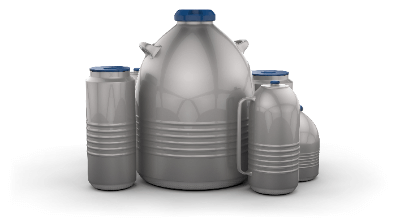What Is a Dewar Bottle?
 A Dewar bottle is an insulated container that was commercialized by James Dewar in 1982. These bottles are the precursors to the commonly known “vacuum bottle” and “Thermos water bottle,” sharing similar structures.
A Dewar bottle is an insulated container that was commercialized by James Dewar in 1982. These bottles are the precursors to the commonly known “vacuum bottle” and “Thermos water bottle,” sharing similar structures.
A Dewar bottle has three distinctive structures that enable it to retain cold or heat for extended periods:
- Two walls that make up the container
- A vacuum layer between the two walls
- The wall facing the vacuum layer blocks thermal radiation due to the reflection
Uses of Dewar Bottles
Dewar bottles are used to store liquids at extreme temperatures, ranging from minus 200°C to nearly 300°C. They are commonly used in chemical experiments, temporary refrigerant storage, and transportation. For instance, they are used in BAM (German Federal Institute for Materials Testing) thermal storage tests to measure the hazards of storing self-reactive substances. These tests often include protocols that utilize Dewar bottles.
Dewar bottles are typically made of stainless steel, but recent developments have led to the production of transparent glass Dewar bottles for observing container contents. They come in various types, including wide-mouth models for easy access and narrow-mouth models to minimize content evaporation.
Principle of Dewar Bottles
Dewar bottles function by utilizing a vacuum layer to block heat transfer, providing excellent thermal insulation. Heat transfer involves three principles:
1. Heat Transfer
Heat conduction occurs as molecules in motion at high temperatures transfer their energy to neighboring molecules to maintain equilibrium.
2. Convection
Convection involves the circulation and movement of gases and liquids as their molecular motion intensifies and density decreases when heated.
3. Thermal Radiation
Thermal radiation transfers heat through the transmission of electromagnetic waves.
In a Dewar bottle, the vacuum layer between the two walls prevents heat conduction and convection. To block thermal radiation, the inner surfaces of the walls are mirror-finished to reflect electromagnetic radiation, thereby maintaining the temperature inside the container.
Other Information on Dewar Bottles
Points to Note When Using Dewar Bottles
Due to past accidents with Dewar bottles, especially those storing liquid nitrogen, they should be handled with care. Important safety tips include:
- Do not put a lid on the Dewar bottle. Sealing a Dewar bottle containing liquid nitrogen can lead to an explosion due to air moisture freezing and blocking the gap between the bottle and the lid.
- Use leather gloves. Leather gloves are recommended when handling liquid nitrogen to prevent the gloves from sticking to your hands in case of spills.
- Be aware of your surroundings. If a Dewar bottle containing liquid nitrogen is knocked over, the rapid vaporization of the liquid nitrogen can displace air and pose a suffocation risk. Leave the room immediately or ventilate thoroughly in such cases. Also, check for any damage or cracks in the bottle after a fall.